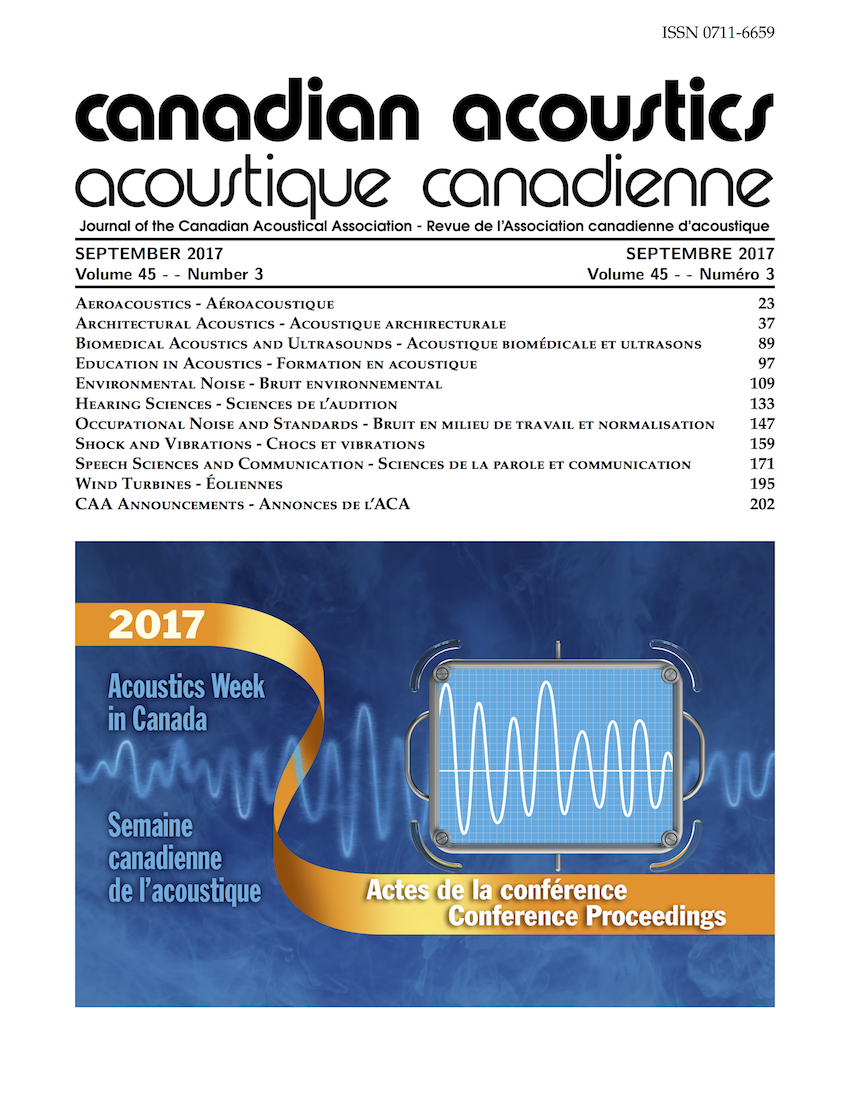The impact of dialect on the ability to understand speech-in-noise
Abstract
Difficulty understanding speech-in-noise (SIN) is one of the most commonly reported hearing issues for older adults. Thus, being able to accurately assess an individuals’ ability to understand SIN is of utmost importance. A number of standardized assessments have been developed to quantify this ability. These tests normally use pre-recorded speech as the target stimulus, and thus the language and dialect of each test cannot be easily modified. One issue that has received scant attention is how dialect impacts performance on a standardized SIN test. There is some evidence that it is more difficult to understand SIN in your native language, but not your native dialect. How this difficulty translates to a standardized, clinical SIN assessment is poorly understood. To address this issue, the QuickSIN was administered to a sample of native speakers of Newfoundland English. The QuickSIN is a standardized SIN assessment, and the target sentences are spoken in an English dialect that comes from the northern United States. The participants from Newfoundland performed outside the 95% CIs for the QuickSIN, despite having normal audiometric thresholds, which suggests that difficulties with dialect and not with hearing can contribute poorer performance on a SIN test in a clinical setting. The negative effect of dialect mismatch on clinical SIN assessments limits the ability for clinicians to accurately quantify SIN abilities in people whose native dialect does not match the test dialect.
Additional Files
Published
How to Cite
Issue
Section
License
Author Licensing Addendum
This Licensing Addendum ("Addendum") is entered into between the undersigned Author(s) and Canadian Acoustics journal published by the Canadian Acoustical Association (hereinafter referred to as the "Publisher"). The Author(s) and the Publisher agree as follows:
-
Retained Rights: The Author(s) retain(s) the following rights:
- The right to reproduce, distribute, and publicly display the Work on the Author's personal website or the website of the Author's institution.
- The right to use the Work in the Author's teaching activities and presentations.
- The right to include the Work in a compilation for the Author's personal use, not for sale.
-
Grant of License: The Author(s) grant(s) to the Publisher a worldwide exclusive license to publish, reproduce, distribute, and display the Work in Canadian Acoustics and any other formats and media deemed appropriate by the Publisher.
-
Attribution: The Publisher agrees to include proper attribution to the Author(s) in all publications and reproductions of the Work.
-
No Conflict: This Addendum is intended to be in harmony with, and not in conflict with, the terms and conditions of the original agreement entered into between the Author(s) and the Publisher.
-
Copyright Clause: Copyright on articles is held by the Author(s). The corresponding Author has the right to grant on behalf of all Authors and does grant on behalf of all Authors, a worldwide exclusive license to the Publisher and its licensees in perpetuity, in all forms, formats, and media (whether known now or created in the future), including but not limited to the rights to publish, reproduce, distribute, display, store, translate, create adaptations, reprints, include within collections, and create summaries, extracts, and/or abstracts of the Contribution.


